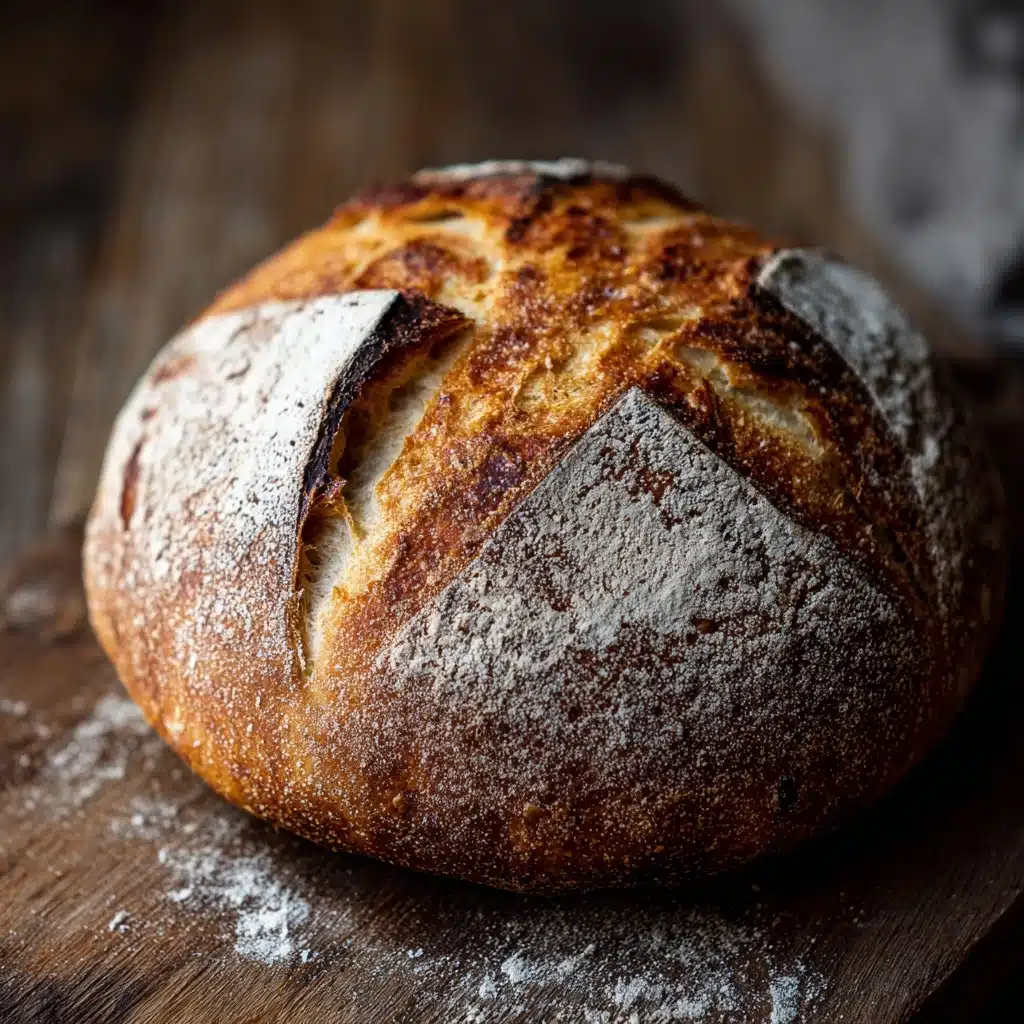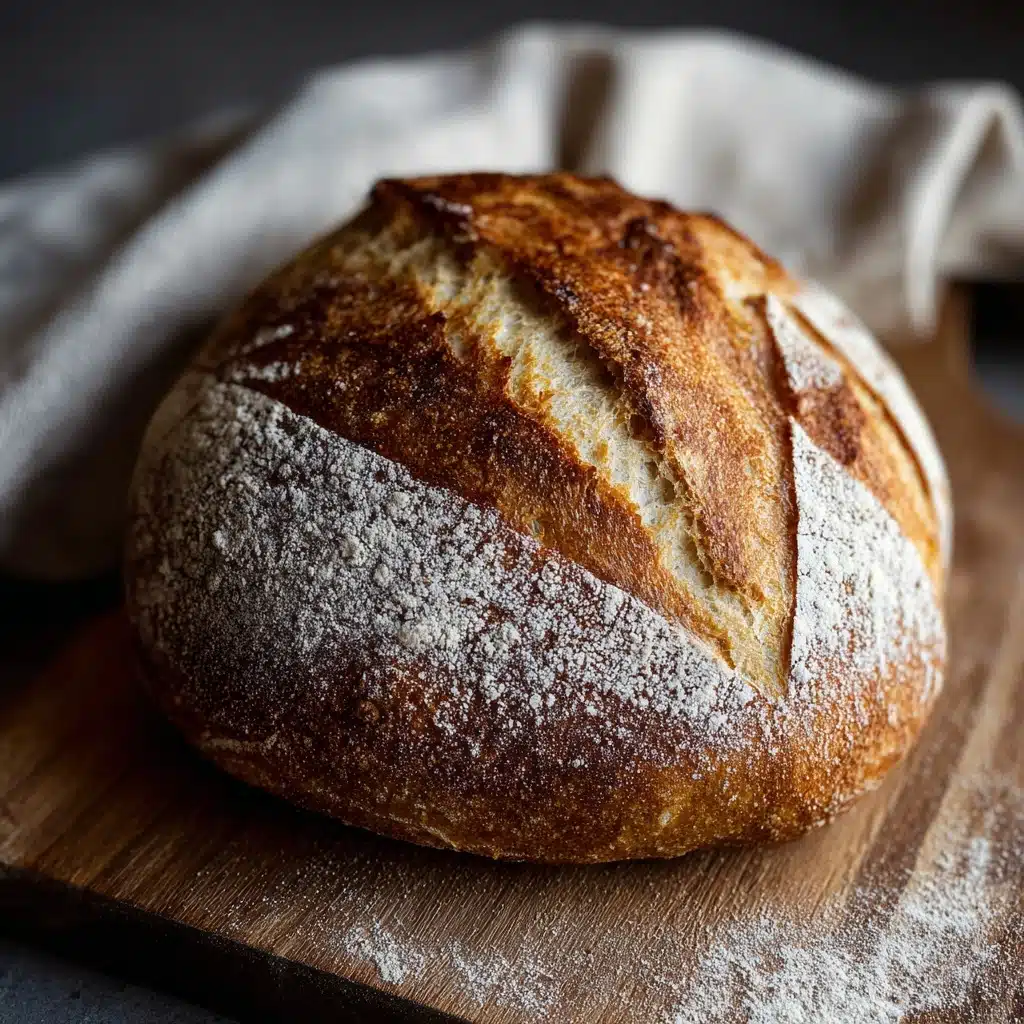easter sourdough bread Recipe
If you’re looking to add an unforgettable, heartfelt touch to your spring table, this easter sourdough bread is exactly what you need. Bursting with warm spices, a hint of citrus zest, and the rustic tang of a naturally fermented starter, this loaf is more than just bread—it’s a celebration of flavors and tradition baked into one. Whether you’re making it for a festive brunch or simply want to fill your home with a mouthwatering aroma, this easter sourdough bread will quickly become a treasured favorite you’ll want to make year after year.

Ingredients You’ll Need
The beauty of this easter sourdough bread lies in its simplicity. Each ingredient plays an essential role, bringing texture, taste, and seasonal cheer to the loaf without any fuss. From the tangy starter to the fragrant spices and bright orange zest, these elements combine perfectly to create bread that feels both classic and delightfully unique.
- All-purpose flour: Provides the sturdy base for a soft yet chewy crumb.
- Active sourdough starter: Adds natural leavening and a signature tang that makes this bread stand out.
- Warm water: Helps activate the starter and hydrate the flour for ideal dough consistency.
- Salt: Enhances all the flavors and strengthens the dough’s structure.
- Honey (or maple syrup): Brings just the right touch of sweetness for balance and moisture.
- Orange zest: Infuses a refreshing citrus note that brightens every bite.
- Ground cinnamon: Provides a warm, comforting spice that complements the sourdough perfectly.
- Ground nutmeg: Adds subtle earthiness and depth to the flavor profile.
- Raisins or dried cranberries (optional): Introduce bursts of chewy fruitiness for extra texture and sweetness.
How to Make easter sourdough bread
Step 1: Activate the Starter and Combine Wet Ingredients
Start by stirring together your active sourdough starter, warm water, and honey in a mixing bowl. This mixture wakes up the natural yeast and builds the flavorful foundation for the dough. The sweetness from the honey helps boost fermentation while adding a subtle complexity.
Step 2: Mix in Dry Ingredients
Add the all-purpose flour, salt, orange zest, cinnamon, and nutmeg to the bowl. Stir everything until a shaggy dough forms. Don’t worry if it looks rough and uneven at this point—that’s exactly what you want before kneading to develop the gluten properly.
Step 3: Knead the Dough
Turn the dough out onto a floured surface and knead for about 10 minutes. You’re aiming for a smooth, elastic texture that springs back when pressed. If you’re including raisins or dried cranberries, gently fold them in during the last minute of kneading to distribute them evenly without crushing.
Step 4: First Rise
Place your dough in a lightly oiled bowl and cover it with a towel. Let it rest in a warm spot for 1 to 2 hours until it doubles in size. This rise is crucial for developing the airy texture and rich sourdough flavor that makes this easter sourdough bread so special.
Step 5: Shape the Loaf
Once risen, gently punch down the dough to release excess air. Shape it into a round loaf and set it on parchment paper. This rustic shape is perfect for creating a beautiful crust and uneven crumb that has both chew and tenderness.
Step 6: Second Rise
Cover the shaped loaf again and let it rise for 30 to 60 minutes, until it looks puffed and lively. This final proofing gives the bread lift and lightness while preserving the sourdough’s character.
Step 7: Preheat the Oven
Preheat your oven to 450°F (230°C). Place a baking stone or tray inside so it’s hot when you’re ready to bake. This intense heat jumpstarts the crust formation for that perfect golden color and crunch.
Step 8: Bake the Bread
Carefully transfer the loaf with the parchment onto the hot baking surface. Bake for 30 to 35 minutes until the crust is beautifully browned and the loaf sounds hollow when tapped underneath—a true hallmark of a perfectly baked sourdough.
Step 9: Cool Before Slicing
Remove the bread from the oven and cool it on a wire rack. Allowing it to rest ensures the crumb finishes setting and that each slice pulls apart beautifully without becoming gummy.
How to Serve easter sourdough bread

Garnishes
A dusting of powdered sugar or a light drizzle of honey over slices takes this easter sourdough bread into indulgent territory. Fresh sprigs of rosemary or edible flowers make charming, fragrant accents perfect for Easter gatherings.
Side Dishes
Pairing this bread with creamy cheeses like brie or ricotta elevates every bite, while a bowl of homemade soup or a fresh spring salad complements its wholesome flavor wonderfully. The slight sweetness and spice also pair well with scrambled eggs or smoked salmon for brunch.
Creative Ways to Present
Transform your loaf into a centerpiece by shaping it into a wreath before baking and weaving in dried fruit for festive flair. You can also slice thick, toasty rounds and use them as a base for open-faced sandwiches topped with seasonal veggies or soft cheeses.
Make Ahead and Storage
Storing Leftovers
Keep any leftover bread wrapped loosely in a cotton towel or paper bag at room temperature for up to two days. This helps maintain just the right balance of crust crispness and crumb softness without trapping moisture.
Freezing
For longer storage, slice the bread and freeze it in an airtight container or freezer bag. This way, you can toast a slice whenever a craving strikes without losing any of the fresh flavors.
Reheating
Bring frozen or day-old bread back to life by warming it in a 350°F (175°C) oven for 10 to 15 minutes, wrapped loosely in foil to keep moisture in. Alternatively, a quick toast helps restore the crisp edges while keeping the center tender.
FAQs
Can I use a different flour for the easter sourdough bread?
Absolutely! While all-purpose flour offers a balanced texture, you can experiment with bread flour for more chew or even incorporate whole wheat for added nuttiness. Just keep in mind whole grains may require a slightly longer fermentation.
What if I don’t have an active sourdough starter?
If you don’t have a starter, you can either prepare one in advance or substitute with commercial yeast for a quicker version, though the flavor will be less complex. The magic of easter sourdough bread truly shines when the starter is alive and active.
Can I add other dried fruits or nuts?
Totally! Feel free to toss in chopped dried apricots, figs, or toasted nuts like walnuts or pecans. These additions bring wonderful texture and extra bursts of flavor that complement the orange and spice beautifully.
How long does the dough take to rise?
The first rise usually takes 1 to 2 hours depending on room temperature, and the second rise around 30 to 60 minutes. Warmer environments speed up fermentation, so keep an eye on the dough’s size rather than the clock.
What is the best way to store leftover easter sourdough bread?
Store leftover loaf at room temperature in a breathable bag or wrapped in a towel to keep the crust crisp. Avoid plastic bags as they trap moisture and cause the crust to become soggy quickly.
Final Thoughts
There’s something truly special about baking your own easter sourdough bread—the aroma filling the room, the rustic crust, and the community of flavors from the spices and citrus zest. It’s a wonderful way to mark the season with a bread that’s as delicious as it is meaningful. I can’t wait for you to try this recipe and make it your own springtime tradition!
Print
easter sourdough bread Recipe
- Total Time: 3 hours 30 minutes
- Yield: 1 round loaf (about 8–10 slices) 1x
- Diet: Vegetarian
Description
A festive and aromatic Easter sourdough bread featuring a blend of warm spices, citrus zest, and a hint of natural sweetness. This rustic loaf combines the tangy depth of sourdough with orange zest, cinnamon, nutmeg, and optional dried fruits, making it a perfect addition to your holiday table or a cozy breakfast treat.
Ingredients
Dough
- 3 cups all-purpose flour
- 1 cup active sourdough starter
- 1 cup warm water
- 1 teaspoon salt
- 2 tablespoons honey (or maple syrup as a substitute)
- Zest of 1 large orange
- 1 teaspoon ground cinnamon
- 1/2 teaspoon ground nutmeg
Optional Add-ins
- 1/4 cup raisins or dried cranberries
Instructions
- Mix wet ingredients. In a mixing bowl, combine the active sourdough starter, warm water, and honey. Stir until well mixed to activate the starter and evenly dissolve the sweetener.
- Add dry ingredients. Add the all-purpose flour, salt, orange zest, cinnamon, and nutmeg to the wet mixture. Stir until a shaggy dough forms, ensuring all ingredients are incorporated.
- Knead dough. Transfer the dough to a floured surface and knead for about 10 minutes until it becomes smooth and elastic. If using raisins or dried cranberries, fold them in during the last minute of kneading for even distribution.
- First rise. Place the kneaded dough into a lightly oiled bowl, cover with a kitchen towel, and let it rise in a warm place for 1-2 hours, or until it doubles in size, developing flavor and structure.
- Shape the loaf. Gently punch down the risen dough to release air. Shape it into a round loaf shape and place it on a sheet of parchment paper to prepare for the second rise.
- Second rise. Cover the loaf with a kitchen towel and let it rise again for 30-60 minutes until puffed up, which will create a light and airy crumb.
- Preheat oven. Heat your oven to 450°F (230°C) and place a baking stone or baking tray inside to heat, ensuring a hot surface for baking the bread.
- Bake the bread. Carefully transfer the loaf with the parchment paper onto the hot baking stone or tray. Bake for 30-35 minutes until the crust is golden brown and the loaf sounds hollow when tapped on the bottom.
- Cool down. Remove the bread from the oven and place it on a wire rack to cool completely before slicing to preserve texture and flavor.
Notes
- For a more intense orange flavor, add 1 teaspoon of orange extract.
- Maple syrup can be used as a vegan substitute for honey.
- Ensure your sourdough starter is active and bubbly for best rise results.
- You can substitute all-purpose flour with bread flour for a slightly chewier texture.
- Store the bread in a paper bag at room temperature for up to 3 days to maintain crustiness.
- Freezing the loaf after baking extends freshness; slice before freezing for convenience.
- Prep Time: 20 minutes
- Cook Time: 30-35 minutes
- Category: Bread
- Method: Baking
- Cuisine: European
Nutrition
- Serving Size: 1 slice (approx. 50g)
- Calories: 150 kcal
- Sugar: 4 g
- Sodium: 220 mg
- Fat: 1.5 g
- Saturated Fat: 0.2 g
- Unsaturated Fat: 1.3 g
- Trans Fat: 0 g
- Carbohydrates: 30 g
- Fiber: 2 g
- Protein: 4 g
- Cholesterol: 0 mg
Keywords: Easter sourdough bread, sourdough, orange zest bread, spiced bread, homemade bread, festive bread, cinnamon nutmeg bread







